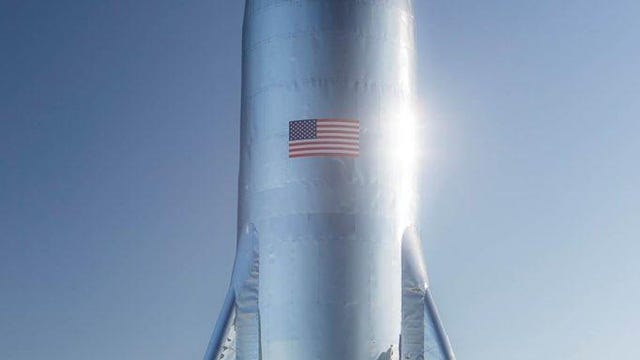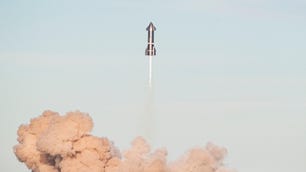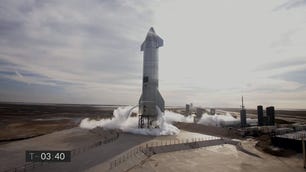Technologies
Next Launch of SpaceX Starship Faces More Potential Delays
An investigation into April’s explosive test flight has closed, but another agency needs time to review upgrades to Elon Musk’s big rocket.
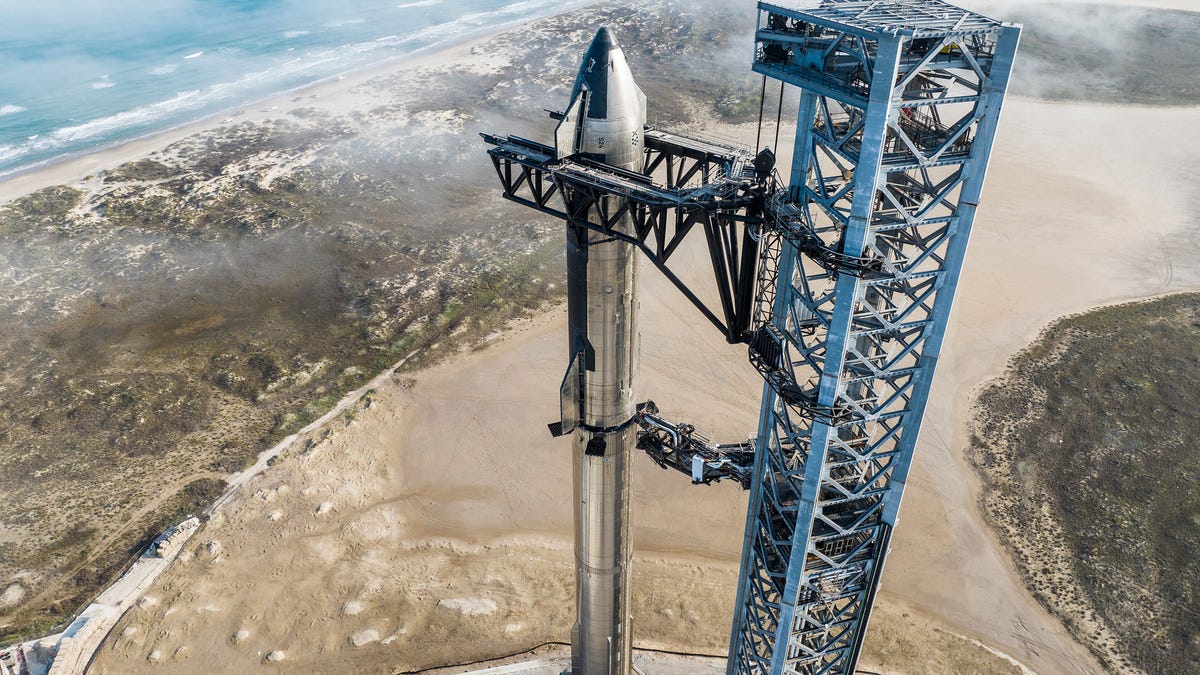
While the Federal Aviation Administration has been working closely with SpaceX to approve the next launch of Starship, a required environmental review by a different federal agency could keep the vehicle grounded for months longer.
The US Fish and Wildlife service told Bloomberg on Monday that it has yet to begin its review of a new water deluge system that SpaceX plans to operate during its next launch. The agency is working with the FAA to complete its part of the permitting process, but said it has not yet received all the materials it needs to begin the review, which could take anywhere from one to four months.
The new deluge system is meant to dampen some of the significant heat and force from the launch. Starship’s first orbital launch attempt in April essentially destroyed much of the launch pad at the company’s Starbase facility in Texas.
Meanwhile, the head of the FAA is positive about Starship’s progress toward another flight.
«We’re working well with them and have been in good discussions,» interim FAA Administrator Polly Trottenberg told reporters Sept. 13, according to Reuters.
The FAA said on Sept. 8 it had closed its investigation into the «mishap» ending of Starship’s first orbital flight attempt on April 20. That test ended with the vehicle being intentionally destroyed after the first stage Super Heavy booster failed to separate from the main Starship itself.
The FAA, which oversees commercial spaceflight in the US, sent a letter to SpaceX outlining a list of 63 corrective actions to be taken before a launch license will be issued for the next Starship orbital flight attempt.
SpaceX founder Elon Musk said most of those changes are done and he’s ready to blast off.
To be clear, the list of changes was developed in cooperation with SpaceX engineers and approved by the FAA. The way the process actually works is that SpaceX determines what it thinks caused the mishap and submits a report, including corrective actions, to the FAA. That report was submitted Aug. 21. As part of its side of the investigation, the FAA reviewed that report and sent over a final list of required changes to SpaceX last week.
«Corrective actions include redesigns of vehicle hardware to prevent leaks and fires, redesign of the launch pad to increase its robustness, incorporation of additional reviews in the design process, additional analysis and testing of safety critical systems,» the FAA said in a statement.
The agency emphasized that «the closure of the mishap investigation does not signal an immediate resumption of Starship launches.»
Just days before the FAA announcement, SpaceX and Musk said on X (formerly Twitter) that a new Starship prototype, dubbed Ship 25, had been stacked atop a new Super Heavy booster and that the mated pair was ready to launch.
SpaceX later released a statement of its own that pinpointed the failure of the April 20 test flight.
«During ascent, the vehicle sustained fires from leaking propellant in the aft end of the Super Heavy booster, which eventually severed connection with the vehicle’s primary flight computer,» the statement reads. «This led to a loss of communications to the majority of booster engines and, ultimately, control of the vehicle.»
So when will Starship fly?
The company says it has since made numerous fixes, upgrades and other mitigations to Starship, its testing regime and its launch infrastructure. The launch pad at the SpaceX Starbase facility in south Texas was partially destroyed during the April blastoff.
Musk said on X on Sept. 10 that the SpaceX team had completed 57 of the improvements required by the FAA and that the remaining six items refer to future actions for later flights.
However, the FAA’s letter sent to SpaceX on Sept. 7, which was shared with myself and other reporters,implied that the company has not yet submitted its application for a launch license for Starship’s next attempt at reaching space.
So it appears Starship is getting closer to launching again, but there’s still some work to be done, including the Fish and Wildlife Service’s environmental review, which now seems to be the highest hurdle to clear.
If the agency begins that review soon, we could still see an October launch under the best case scenario. It’s also conceivable it gets pushed to 2024.
Stay tuned.
Technologies
Today’s NYT Mini Crossword Answers for Tuesday, Oct. 14
Here are the answers for The New York Times Mini Crossword for Oct. 14.
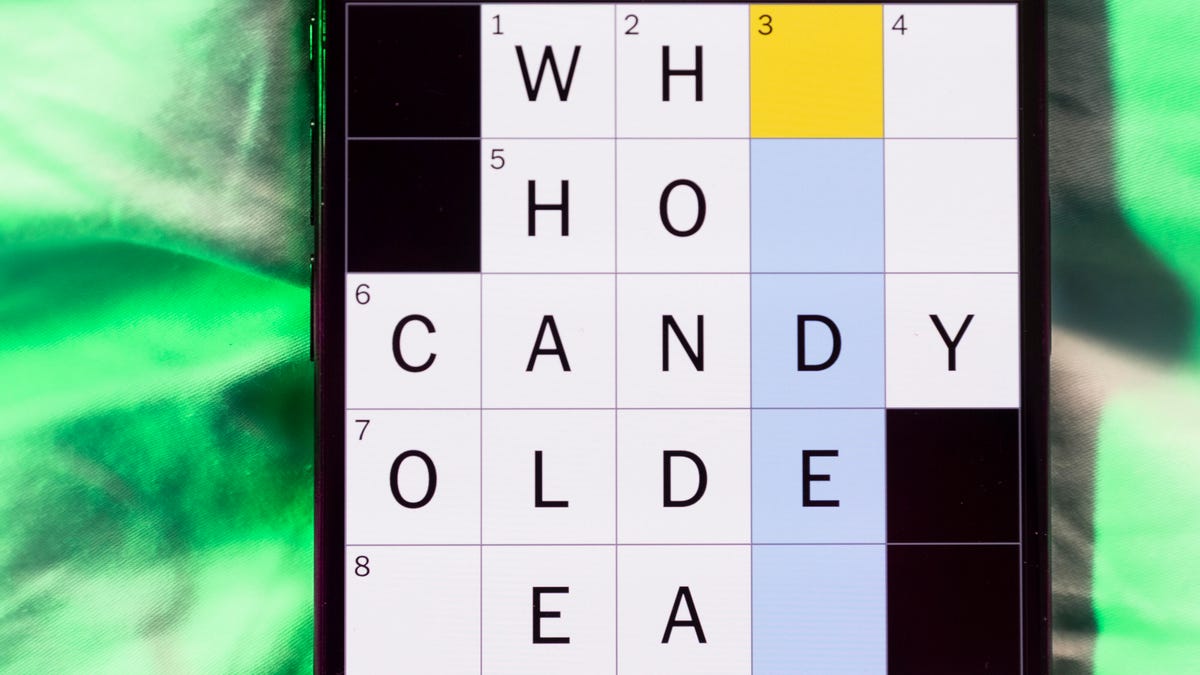
Looking for the most recent Mini Crossword answer? Click here for today’s Mini Crossword hints, as well as our daily answers and hints for The New York Times Wordle, Strands, Connections and Connections: Sports Edition puzzles.
Today’s Mini Crossword has an odd vertical shape, with an extra Across clue, and only four Down clues. The clues are not terribly difficult, but one or two could be tricky. Read on if you need the answers. And if you could use some hints and guidance for daily solving, check out our Mini Crossword tips.
If you’re looking for today’s Wordle, Connections, Connections: Sports Edition and Strands answers, you can visit CNET’s NYT puzzle hints page.
Read more: Tips and Tricks for Solving The New York Times Mini Crossword
Let’s get to those Mini Crossword clues and answers.
Mini across clues and answers
1A clue: Smokes, informally
Answer: CIGS
5A clue: «Don’t have ___, man!» (Bart Simpson catchphrase)
Answer: ACOW
6A clue: What the vehicle in «lane one» of this crossword is winning?
Answer: RACE
7A clue: Pitt of Hollywood
Answer: BRAD
8A clue: «Yeah, whatever»
Answer: SURE
9A clue: Rd. crossers
Answer: STS
Mini down clues and answers
1D clue: Things to «load» before a marathon
Answer: CARBS
2D clue: Mythical figure who inspired the idiom «fly too close to the sun»
Answer: ICARUS
3D clue: Zoomer around a small track
Answer: GOCART
4D clue: Neighbors of Norwegians
Answer: SWEDES
Technologies
Watch SpaceX’s Starship Flight Test 11
Technologies
New California Law Wants Companion Chatbots to Tell Kids to Take Breaks
Gov. Gavin Newsom signed the new requirements on AI companions into law on Monday.

AI companion chatbots will have to remind users in California that they’re not human under a new law signed Monday by Gov. Gavin Newsom.
The law, SB 243, also requires companion chatbot companies to maintain protocols for identifying and addressing cases in which users express suicidal ideation or self-harm. For users under 18, chatbots will have to provide a notification at least every three hours that reminds users to take a break and that the bot is not human.
It’s one of several bills Newsom has signed in recent weeks dealing with social media, artificial intelligence and other consumer technology issues. Another bill signed Monday, AB 56, requires warning labels on social media platforms, similar to those required for tobacco products. Last week, Newsom signed measures requiring internet browsers to make it easy for people to tell websites they don’t want them to sell their data and banning loud advertisements on streaming platforms.
AI companion chatbots have drawn particular scrutiny from lawmakers and regulators in recent months. The Federal Trade Commission launched an investigation into several companies in response to complaints by consumer groups and parents that the bots were harming children’s mental health. OpenAI introduced new parental controls and other guardrails in its popular ChatGPT platform after the company was sued by parents who allege ChatGPT contributed to their teen son’s suicide.
«We’ve seen some truly horrific and tragic examples of young people harmed by unregulated tech, and we won’t stand by while companies continue without necessary limits and accountability,» Newsom said in a statement.
Don’t miss any of our unbiased tech content and lab-based reviews. Add CNET as a preferred Google source.
One AI companion developer, Replika, told CNET that it already has protocols to detect self-harm as required by the new law, and that it is working with regulators and others to comply with requirements and protect consumers.
«As one of the pioneers in AI companionship, we recognize our profound responsibility to lead on safety,» Replika’s Minju Song said in an emailed statement. Song said Replika uses content-filtering systems, community guidelines and safety systems that refer users to crisis resources when needed.
Read more: Using AI as a Therapist? Why Professionals Say You Should Think Again
A Character.ai spokesperson said the company «welcomes working with regulators and lawmakers as they develop regulations and legislation for this emerging space, and will comply with laws, including SB 243.» OpenAI spokesperson Jamie Radice called the bill a «meaningful move forward» for AI safety. «By setting clear guardrails, California is helping shape a more responsible approach to AI development and deployment across the country,» Radice said in an email.
One bill Newsom has yet to sign, AB 1064, would go further by prohibiting developers from making companion chatbots available to children unless the AI companion is «not foreseeably capable of» encouraging harmful activities or engaging in sexually explicit interactions, among other things.
-

 Technologies3 года ago
Technologies3 года agoTech Companies Need to Be Held Accountable for Security, Experts Say
-

 Technologies3 года ago
Technologies3 года agoBest Handheld Game Console in 2023
-

 Technologies3 года ago
Technologies3 года agoTighten Up Your VR Game With the Best Head Straps for Quest 2
-

 Technologies4 года ago
Technologies4 года agoVerum, Wickr and Threema: next generation secured messengers
-

 Technologies4 года ago
Technologies4 года agoGoogle to require vaccinations as Silicon Valley rethinks return-to-office policies
-

 Technologies4 года ago
Technologies4 года agoBlack Friday 2021: The best deals on TVs, headphones, kitchenware, and more
-

 Technologies4 года ago
Technologies4 года agoOlivia Harlan Dekker for Verum Messenger
-

 Technologies4 года ago
Technologies4 года agoiPhone 13 event: How to watch Apple’s big announcement tomorrow

